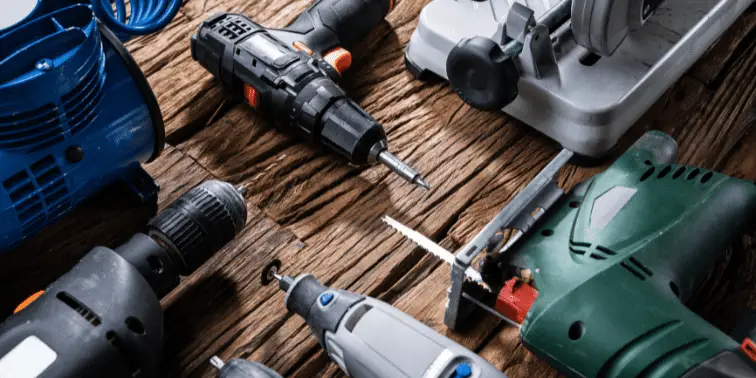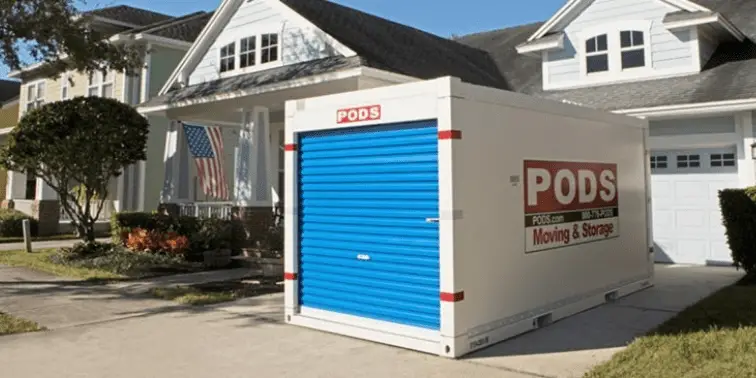No matter how good you are at packing and unpacking, relocating a workshop is a complicated process that needs an impeccable plan.
Heavy equipment and power tools need to be disassembled, sharp tools need to be padded, and what are you gonna do with all these nuts and bolts?
This is why I’ve prepared an extensive guide to effectively pack your workshop. Included are some useful tips, important supplies to buy, and a step-by-step plan to get the job done.
So, without further ado, here’s how to pack a workshop for moving. Let’s get started!
Table of Contents
Here’s What You’ll Need
Packing the contents of your garage may seem like a daunting task, especially when all the workshop tools are laid out in front of you.
The good news is that packing your workshop is fairly easy if you approach it piece by piece. All you need to do is outline a plan, buy a few packing supplies , and get started.
, and get started.
Here are the packing materials you’ll need to get the job done:
- Labels
- Permanent marker
- Duct tape
- Cardboard storage boxes
- Foam
- Bubble Wrap
- Small Zipper Sandwich Bag
- Plastic containers
- Heavy-duty Plastic Totes
- Smartphone camera
If you have any large items that can be disassembled, you should prepare to do so as well. If you can’t find the original assembly manual, you can try looking it up online.
Packing a Workshop for Moving All By Yourself
Here’s what you need to do to effortlessly pack your workshop:
Inspect and Clean Your Tools

Inspecting your tools means carefully looking over your tools before packing, first, deciding what you actually want to take to your new home and what isn’t worth packing. Your garage will hoard an ungodly amount of “stuff” over the years.
means carefully looking over your tools before packing, first, deciding what you actually want to take to your new home and what isn’t worth packing. Your garage will hoard an ungodly amount of “stuff” over the years.
Let’s be honest, most of these items are junk that you probably won’t need again.
A cluttered workshop will be significantly harder to pack and transport. For example, if you have two shovels, consider leaving one. If you have scraps, nails, bottle caps, or anything that can be classified as “junk,” give it to a woodworker or donate them to an organization like a local recycling facility that can make use of it.
like a local recycling facility that can make use of it.
If you do want to keep some of those small, loose items – organize them into small plastic food containers and label them.
Another helpful tip is to arrange your items according to their size. Start with the big shovels and miter saws and work your way down to knives and toolboxes.
This will enable you to plan where your items will be placed, which items will need to be padded, and how many cardboard boxes and heavy-duty totes will be needed.
Power Tools
Before you start to pack power tools, first separate your power tools depending on whether they are gas or electric tools.
For the gas power tools, make sure to completely drain them (more on getting rid of your hazardous liquids in a minute) and clean them out. If you’ve started your moving process enough in advance – now is a great time to give some of your power tools that thorough cleaning you’ve always said you’re going to do.
Electric power tools are a little easier to deal with. My one piece of advice here is to roll the cord tight and tape it. This will eliminate a tangled mess when trying to get everything out of boxes later, or worse, a cord inadvertently getting sliced because it got caught on something sharp while being moved.
Disassemble Bulky Tools
Remember all the instruction manuals you contemplated throwing away, but didn’t? This is where they come into play.
Large tools can be a burden to pack and relocate. If your tools can be taken apart, they’ll be much easier to pack into smaller boxes.
If you can’t find the instruction manuals, you have two options. The first is to look online for the specific item you have and try to download the original instructions. If you can’t find them online, this is where your smartphone camera will come in handy.
To the best of your abilities, disassemble your large tools and document each step using your camera phone. Keep all the nuts, bolts, and screws in the zippered plastic bag and put a label on it.
Cushion Gears and Larger Tools
This is where the foam comes into play. Large gears and sharp tools can easily cut through your cardboard boxes. This will either damage whatever comes in contact with them or damage the tools themselves.
When packing a sharp object, carefully cushion the edges with thick foam and secure it inside the box. Make sure you put foam around the box to prevent the sharp object from moving.
If you work with many sharp items, buy boxes that are covered with plywood. This adds an extra layer of protection and prevents unnecessary damage.
Moving blankets are another good option to carefully wrap blades and other sharp items with. They’re exceptionally thick and durable and can be doubled, or even tripled, up around the object if necessary.
Finally, avoid Styrofoam when packing sharp tools. Even if they appear tough right now, a sharp-edged tool will easily obliterate through the foam and into your cardboard box.
Other Workshop Tools
Other workshop tools, like hand tools, small garden tools and even some of your small electric tools are generally much easier to deal with.
Utilize all the packing supplies at your disposal and pack these types of items into smaller boxes. Then, organize these smaller boxes into large covered plastic totes.
You can use some bubble wrap or brown packing paper to keep items more secure in their smaller boxes where appropriate.
Just make sure to periodically test the weight of your tote so you don’t end up blowing your back out once it’s finally full and ready to move.
Discard Dangerous Chemicals and Liquids

If you’re planning on moving your workshop elsewhere, you’ll probably end up using a moving truck for relocation.
In this case, you must be familiar with all the hazardous materials, like chemicals and liquids, that are prohibited on a moving truck .
.
Getting caught with prohibited items can set you back with a hefty fine. If one of your heavy equipment contains a flammable liquid, it may also get confiscated.
Here’s a list of all prohibited items to be carried on a moving truck:
- Motor oil
- Kerosene
- Gasoline
- Bleach
- Paints
- Paint thinners
- Acetone
When packing your workshop, your safest bet is to dispose of any liquid before moving.
Remember, don’t dump any flammable liquids in the drain. You must take them to a recycling facility or any disposal site to handle your oil, gas, or lubricants.
Plan Your Next Move
Great! You’ve packed your entire workshop into the appropriate boxes, zippered bags, and heavy-duty totes. Now what?
Planning your next move will largely depend on where you’re planning to move your workshop. If it’s two blocks down the road, then you don’t really need to put much thought into it.
Depending on the size of your workshop, you can ask a friend to lend you their pickup truck. You can also hire a moving company to safely take your workshop to its destination.
Hiring Professionals
If packing your workshop is too much for you, you can hire a professional company to do it for you.
This is especially helpful if you’re planning on traveling a long distance or if you own a huge collection of items.
Moving companies aren’t cheap, but they can save you the hassle of packing and unpacking yourself.
There are a few advantages of opting in for a moving company. These include:
- No risk of injury
- Option for moving insurance
- Less heavy-lifting
- Professional disassembly and reassembly
However, choosing a moving company can come with a few drawbacks. These include:
- Expensive, especially for heavy items or long travel distance
- Usually limited to moving trucks
Renting a PODS Container

Instead of paying a fortune for a full-service transportation company, you can rent a PODS container to pack your workshop in.
Related: U-Haul vs PODS for a long distance move
A PODS container is a huge storage container that can hold up to 10,000 lbs of tools and equipment.
Renting a PODS container means all you have to do is pack your workshop into the container and call the company to move it for you.
Since you’re still essentially doing all the heavy labor, the cost of renting a PODS container can be a fraction of the full-service cost.
If you’re looking for a cost-effective solution, rent a PODS container and call up some friends for a favor.
and call up some friends for a favor.
In Conclusion
Packing your workshop for moving is a labor-intensive task. However, proper planning is key to successful packing and unpacking.
If you’re concerned about injuring yourself or want to move your workshop to a location far away, consider hiring a professional company to move your workshop for you.

